2023 Jeep Compass Review: Little Jeep gets big-time muscle (and big-time price)

Pros: Powerful standard engine; great infotainment tech; loads of available equipment; standard all-wheel drive
Cons: Expensive given its competitors; limited interior space; no hybrid option
It’s hard to place the 2023 Jeep Compass into a neat silo with other small SUVs. It has comparable interior space to those we refer to as midcompact SUVs. It now comes standard with an engine that blows the doors off most in that segment and is comparable to the engine upgrades offered by a select few in the compact SUV segment above. Its base price is similar to the compacts as well but, with options, can greatly exceed them. Ditto the Ford Bronco Sport, which is probably the Compass’ closest competitor given its dimensions and off-road image (and off-road capability for some trim levels).
This price issue is tricky, because unless you really value its muscular and refined new engine, and to a lesser extent its terrific in-car tech, it makes the Compass hard to recommend. A Subaru Forester Wilderness or one of the Toyota RAV4’s off-roading trims will deliver comparable capability, but with much greater space and a lower price tag (though admittedly with less power). There are any number of other midcompact and compact SUVs that provide stronger overall value if off-road capability isn’t a priority, as well. One of our favorites, the Bronco Sport, suffers from similarly questionable value, and the Compass certainly has an advantage in terms of interior quality, technology and standard power. Still, Ford’s baby Bronco is the fresher face and, again, it’s often cheaper.
Interior & technology | Passenger & cargo space | Performance & fuel economy
What it’s like to drive | Pricing & trim levels | Crash ratings & safety features
What’s new for 2023?
After an interior overhaul last year, the Compass gets an ever more substantive upgrade under the hood for 2023. The sole engine option goes from the sluggish, unrefined 2.4-liter naturally aspirated inline-four to a much smoother and quieter 2.0-liter turbocharged inline-four. It’s more muscular, with 23 more horsepower and a whopping 49 more pound-feet of torque, and more efficient with a net gain of 2 mpg combined. Better still, the similarly unrefined nine-speed automatic has been chucked to the curb in favor of an eight-speed automatic that’s far superior despite losing a gear. All-wheel drive is now standard on all trim levels, too, removing one more front-wheel-drive Jeep from existence. Outside the powertrain, the 2023 Compass gets standard drowsy driver detection, a rear seat reminder and a security alarm.

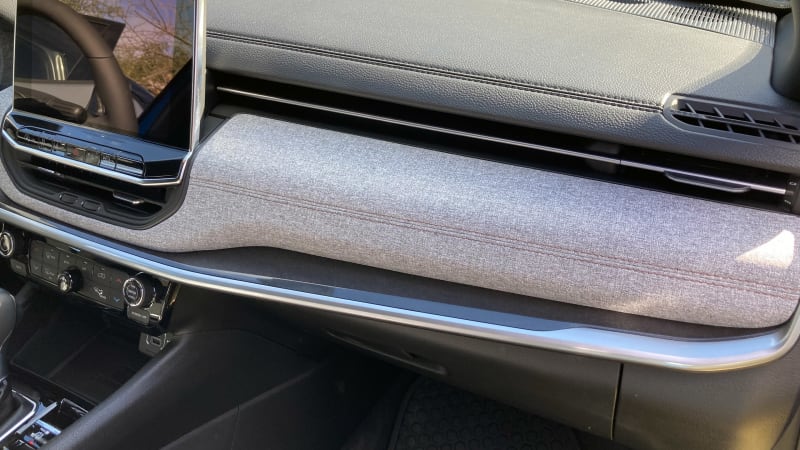
What are the Compass’ interior and in-car technology like?
After last year’s redesign, the Compass interior is far more competitive in terms of materials quality and overall design. There are still some hard plastics down low on the dash and center console, but that’s to be expected for the two segments upon which the Compass straddles (see below). The soft-touch cloth or simulated leather on the dash goes a long way in sprucing up the joint, and while not unique for the segment, it nevertheless helps provide a suitably upscale ambiance for a little SUV with a surprisingly upscale price tag.
Along those lines, every Compass trim level gets an all-digital instrument panel and a standard 10.1-inch touchscreen running the latest, Uconnect 5 user interface. It’s one of our favorite infotainment systems. It looks terrific, with colorful, high-definition graphics, and even better, it is one of the easiest interfaces to use. Wireless Apple CarPlay and Android Auto are standard, too.
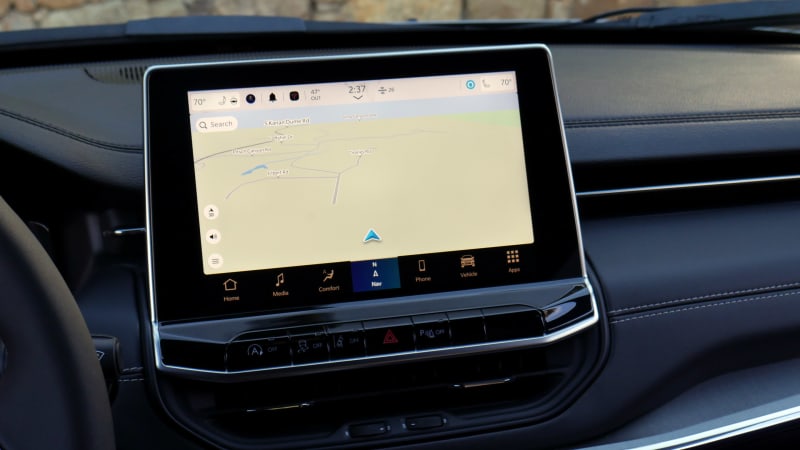
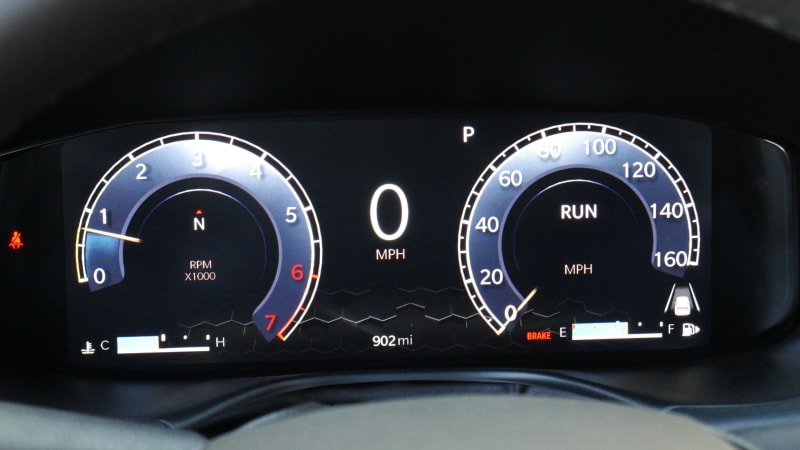
How big is the Compass?
While the Compass may be aggressively priced on the upper end of the compact SUV segment (think the Toyota RAV4 and Subaru Forester), its size is more comparable to what we call the midcompact segment (Honda HR-V, Ford Bronco Sport). It has less cargo space than those midcompacts. In our luggage test, we could not come close to fitting our standard selection of six suitcases – they fit easily in the Bronco Sport and all compacts.
The back seat is much smaller than those of the RAV4, Forester, etc., but on par with that segment below. With taller occupants up front, those in the back are bound to be squished, and fitting a rear-facing child seat without jamming the front passenger seat against the dash might be tough. The Compass is also notably narrower than all of the above, making three-across in the back a challenge. Finally, rear headroom is compromised with the available panoramic sunroof.

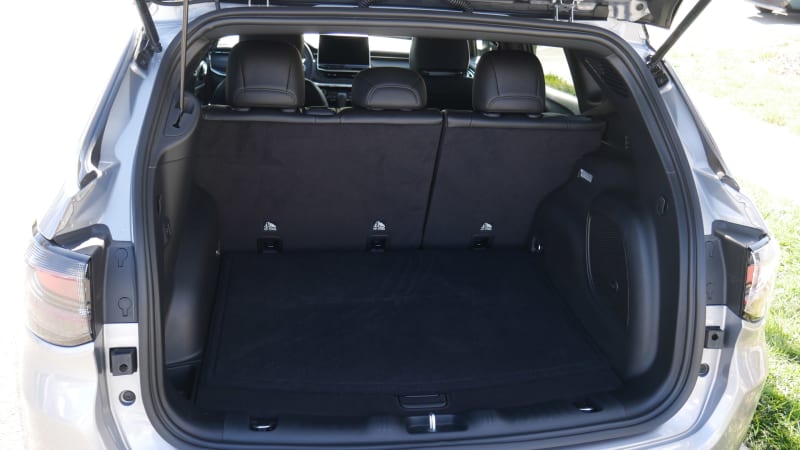
What are the Compass fuel economy and performance specs?
Every Compass comes with the same powertrain and drivetrain. A 2.0-liter turbocharged inline-four produces 200 horsepower and 221 pound-feet of torque, which is considerably greater than the standard engines of similarly priced and/or sized SUVs. An eight-speed automatic is standard along with Jeep’s “Active Drive 4×4” system, which is basically what every other brand would call all-wheel drive since it automatically engages the rear axle when slippage occurs. It is possible to keep the rear axle engaged by pressing the 4×4 Lock button (one of only a few small, crossover-type SUVs to offer this), and the Compass Trailhawk in particular offers an Active Drive Low function that provides a 20:1 crawl ratio.
Fuel economy comes in at 24 miles per gallon city, 32 mpg highway and 27 mpg combined. This is lower than the base powertrains of most competitors, but on par for their engine upgrades or off-roading trim levels. The Trailhawk supposedly has the same fuel economy estimate, but we doubt its real-world efficiency would be the same considering its all-terrain tires and less aerodynamic front end.
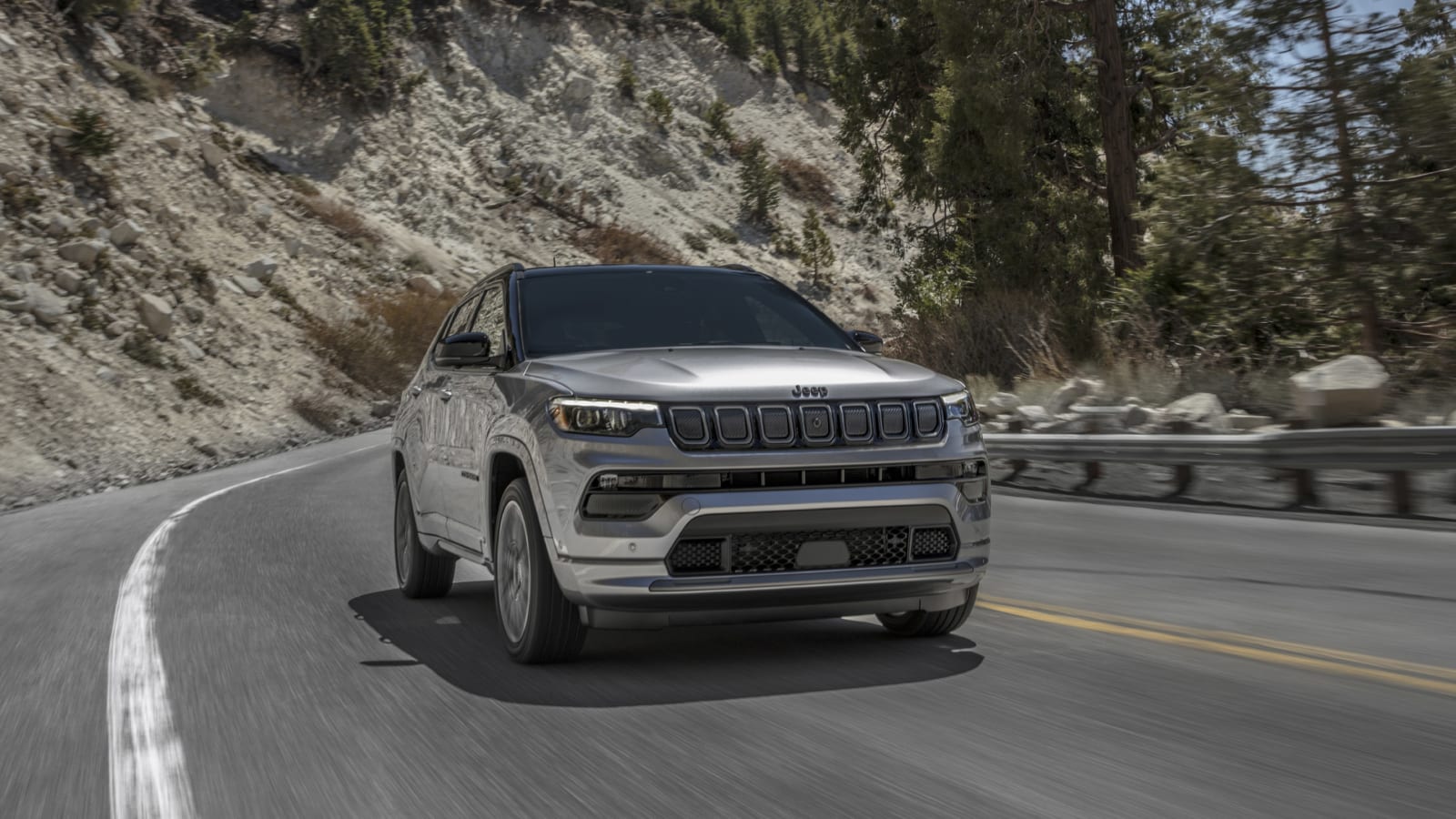
What’s the Compass like to drive?
What a difference a year makes. Through two generations and nearly two decades, the Jeep Compass has suffered from sluggish, unrefined powertrains that made it seriously hard to recommend. For 2023, that changes dramatically thanks to its new turbocharged engine that’s not only more powerful and refined than the old raspy lump it replaces but one of the most muscular among small SUVs. When driving around town or passing on the highway, it has no shortage of grunt. The eight-speed automatic does its job rather smartly, too, which is worth calling out considering so many competitors pack droning CVTs.
Despite the Jeep badge and reputation, the Compass handles smartly on-road. We were surprised by its composure on a winding road with plenty of mid-corner bumps and found its steering to be reasonably precise. The ride is definitely on the firmer side compared to most competitors, with notably less compression greeting you over bumps. The Trailhawk’s all-terrain tires also add a bit more firmness, plus greater noise and lower road-holding capabilities.
What other Jeep Compass reviews can I read?
2018 Jeep Compass Trailhawk Drivers’ Notes Review
Our editors take turns a Compass Trailhawk when this generation debuted. We liked its unique character a lot, but were hung up on the interior and weak-sauce engine. Both of those have changed, so the main focus here should be on the Trailhawk trim and its effects on ride, handling and noise that should broadly be considered the same.
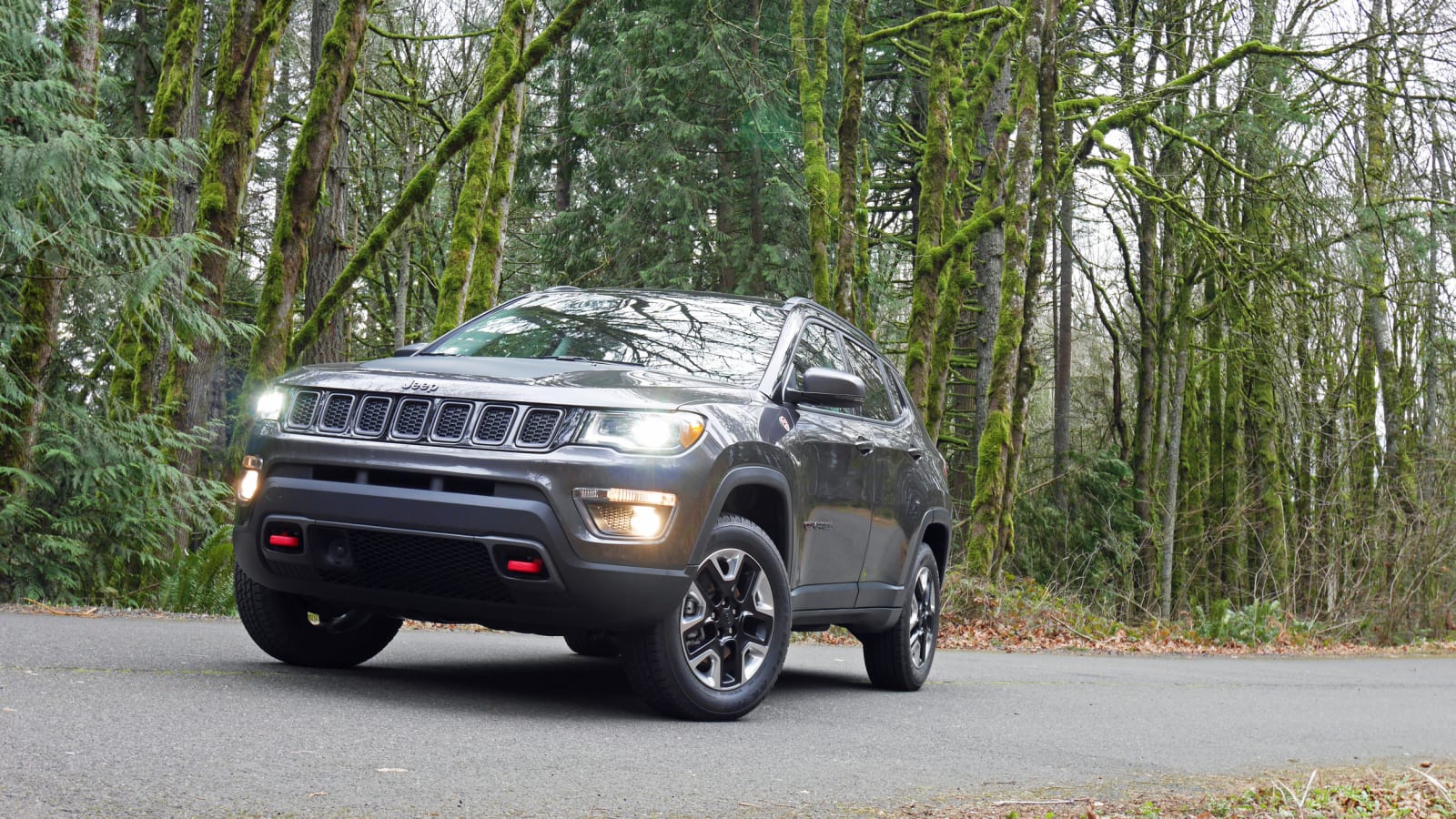
2017 Jeep Compass First Drive
The current-generation Compass dates all the way back to 2017, making it one of the oldest small crossovers. Again, the interior and powertrain updates of the last few years amount to major changes, but the underlying vehicle is the same.
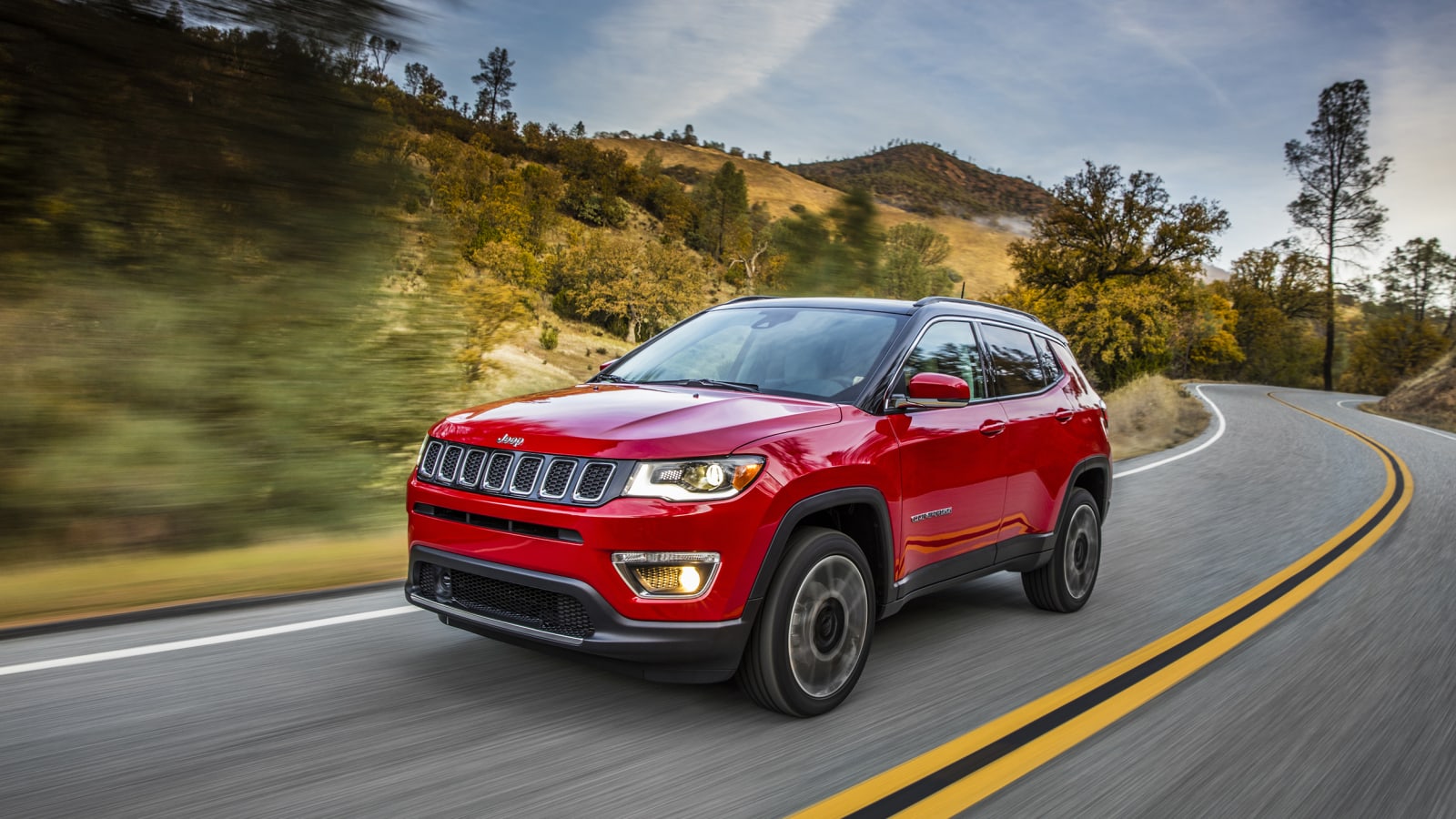
What is the 2023 Compass’ price?
The Jeep Compass starts off with pricing similar to a Ford Bronco Sport and various bigger but less powerful compact SUVs, but upper trim levels balloon to greatly outpace its competitors – even when they’re optioned up. A fully loaded Ford Bronco Sport Badlands is around the $43,000 mark. A loaded Compass Trailhawk we tested is more than $47,000.
Despite the interesting names, the below trims basically represent a gradual increase in equipment. The Altitude and High Altitude offer different style over the Latitude and Limited, respectively (specifically a choice of two-tone color schemes), while the (RED) special edition gets red-painted mirror caps, body cladding and badging, plus 19-inch wheels. The Trailhawk is the only one with significant mechanical upgrades: a 4×4 low mode with a 20:1 crawl ratio, a 1-inch lift, skid plates, all-terrain tires, red tow hooks and hill-descent control. It also has unique styling, including a reshaped and raised front fascia that improves the approach angle.
Keep in mind that all trim levels below include all-wheel drive as standard (unlike many competitors) and that all prices include the $1,595 destination charge.
Sport: $31,590
Latitude: $34,385
Latitude Lux: $35,785
Altitude: $36,180
Limited: $37,090
Trailhawk: $37,835 (below right)
(RED): $39,530
High Altitude: $40,430 (below left)
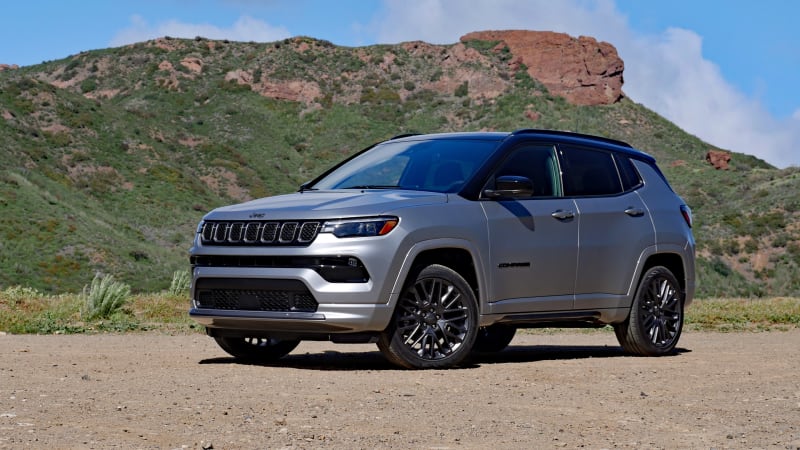
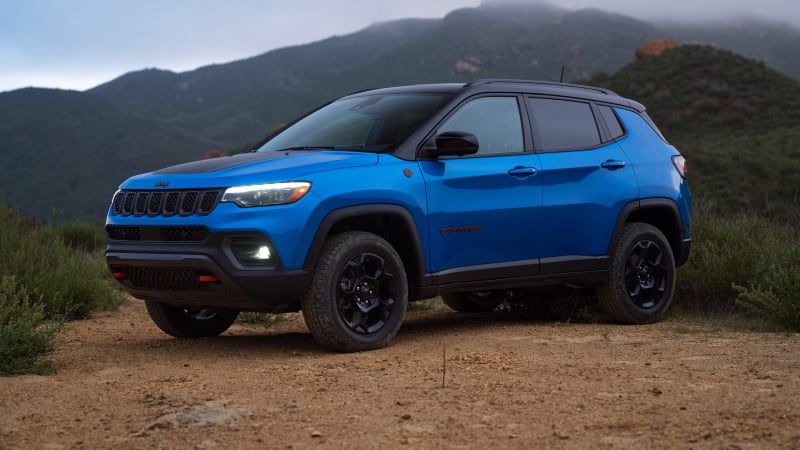
What are the Compass’ safety ratings and driver assistance features?
Every Compass includes as standard equipment forward collision warning with pedestrian/cyclist detection and automatic emergency braking, lane-keeping assist, blind-spot and rear cross-traffic warning, drowsy driver detection and a rear seat reminder. Adaptive cruise control with stop-and-go capability is standard on the four upper trim levels listed above, and part of the optional Driver Assist groups offered on the Latitude trims.
The National Highway Transportation Safety Administration (NHTSA) gave the Compass four out of five stars for overall and front crash protection, plus five stars for side crash protection. It only got a three-star rollover score, which is one star lower than normal for small crossovers. In Insurance Institute for Highway Safety (IIHS) testing, it got the second-best score for vehicle-to-pedestrian prevention, and its headlights received various scores depending on trim (none the worst). The IIHS gave its child seat LATCH anchors the second-worst rating of Marginal for ease of use, however.
Related video:







